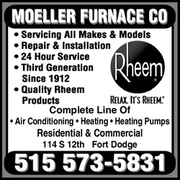How to Choose an HVAC Option for Your Finished Basement

A finished basement adds valuable square footage to your home, but it’s hard to enjoy it if it’s too hot or cold. It’s important to consider residential HVAC solutions as you plan for a finished basement. Some may impact construction or require some re-budgeting. The following is a helpful guide to ensure you find the best options.
Your Guide to Basement HVAC
Types of Units for Basements
 The first option to explore is extending your existing residential HVAC system. You may only need to route new ductwork to the basement. Homeowners enjoy central units because all their heating and cooling tools are in one easy-to-maintain unit. They’re also very powerful and can cool and heat large spaces.
The first option to explore is extending your existing residential HVAC system. You may only need to route new ductwork to the basement. Homeowners enjoy central units because all their heating and cooling tools are in one easy-to-maintain unit. They’re also very powerful and can cool and heat large spaces.
You can also install a ductless unit. These are wall-mounted and connect to an outdoor heat pump via thin refrigerant lines in the walls. They take up little space and still deliver powerful heating and cooling abilities.
Consider a dedicated basement furnace for your heating needs, or even a small central heating and cooling unit routed into the basement. While they may require more extensive installations, you’ll enjoy a unit dedicated specifically to the finished basement.
Considerations
First, think about the size of the basement. If you’re extending your HVAC system, factor in ceiling space for ducts and duct openings in all the rooms. If you’re adding a furnace, set aside space in the plans for a closet to house it.
New electricity, gas, and utility lines may need to be run to the basement to handle these. Furnaces and central heating and cooling units may require higher-voltage plugs and their own circuits. An electrician may even recommend adding a new breaker box to accommodate the larger power loads of these systems. If you choose a ductless option or install a second outdoor unit, account for space inside the walls to route refrigerant lines and points where ducts will enter or pass through exterior walls.
Finally, consider system capacity. Residential HVAC units’ heating and cooling abilities are measured in BTUs. You need roughly 20 BTUs per square foot. Consider if your existing system can meet the needs of the added square footage. If not, it will overwork to heat and cool the whole home. This leads to energy waste and increased strain on the parts. It’s best to consult with an HVAC contractor to make the right decision.
If you’re exploring residential HVAC solutions, contact Moeller Furnace Co. of Fort Dodge, IA. This family-owned and -operated company provides comprehensive heating and cooling services, including repairs and air quality inspections. They also serve commercial HVAC needs, which you can learn about on their website. Call (515) 573-5831 to speak with a representative, and connect on Facebook to receive news and updates.
About the Business
Have a question? Ask the experts!
Send your question

